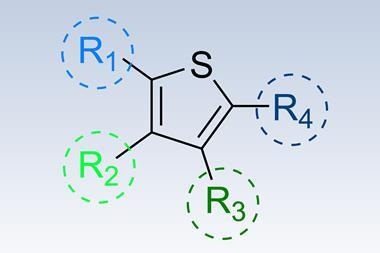Soluble iridium complex brings larger display screen a step closer
Chinese chemists have discovered a soluble and simple-to-make iridium complex that boosts the efficiency of organic light-emitting diodes (OLEDs). This discovery could simplify the manufacture, and reduce the cost, of OLEDs for a wide range of future applications.
OLED screens have a number of advantages over conventional liquid crystal display (LCD) screens. Most importantly, light produced by OLEDs comes directly from the organic polymers that make up the display, rather than shining through coloured filters as in LCD screens.
This means that OLEDs do not require a backlight: they consume far less power and can be made significantly thinner. Materials scientists hope that OLEDs could even be directly printed onto surfaces, or used to make cheap fluorescent lighting.

But to efficiently harness light generated by the polymer, an ’emissive layer’ of phosphorescent material is needed. This converts radiation that would otherwise be wasted into visible light, boosting clarity and brightness. The best materials for this purpose are complexes of iridium(III) with large cyclic ligands that grant stability, a rapid response time, and access to colours across the visible spectrum.
However, making these complexes requires high temperatures or expensive catalysts, and applying them to the organic polymer is a complicated process. This has so far limited OLEDs to smaller applications such as mobile phones.
Now a team led by Biao Wang at Sun Yat-Sen University, Guangzhou, China, has solved these problems by developing a new iridium complex that is both easy to make and highly soluble, potentially allowing it to be sprayed onto a surface.
The secret to the solubility lies in the choice of ligand: sterically-hindered phenolic groups. The researchers report that their complex, which combines iridium with three
phenyl phthalazine-derived ligands, was ’unexpectedly’ synthesised under mild conditions with no catalysts, simply from iridium chloride.
’This is an interesting compound and an excellent result,’ says Mark Thompson, who develops OLED materials at the University of South California, US. ’We will certainly learn from this research - there are now a number of viable candidates for making bigger OLED displays.’
Lewis Brindley
References
Tong et al, J. Mat. Chem., 2008. DOI: 10.1039/b800977e







No comments yet